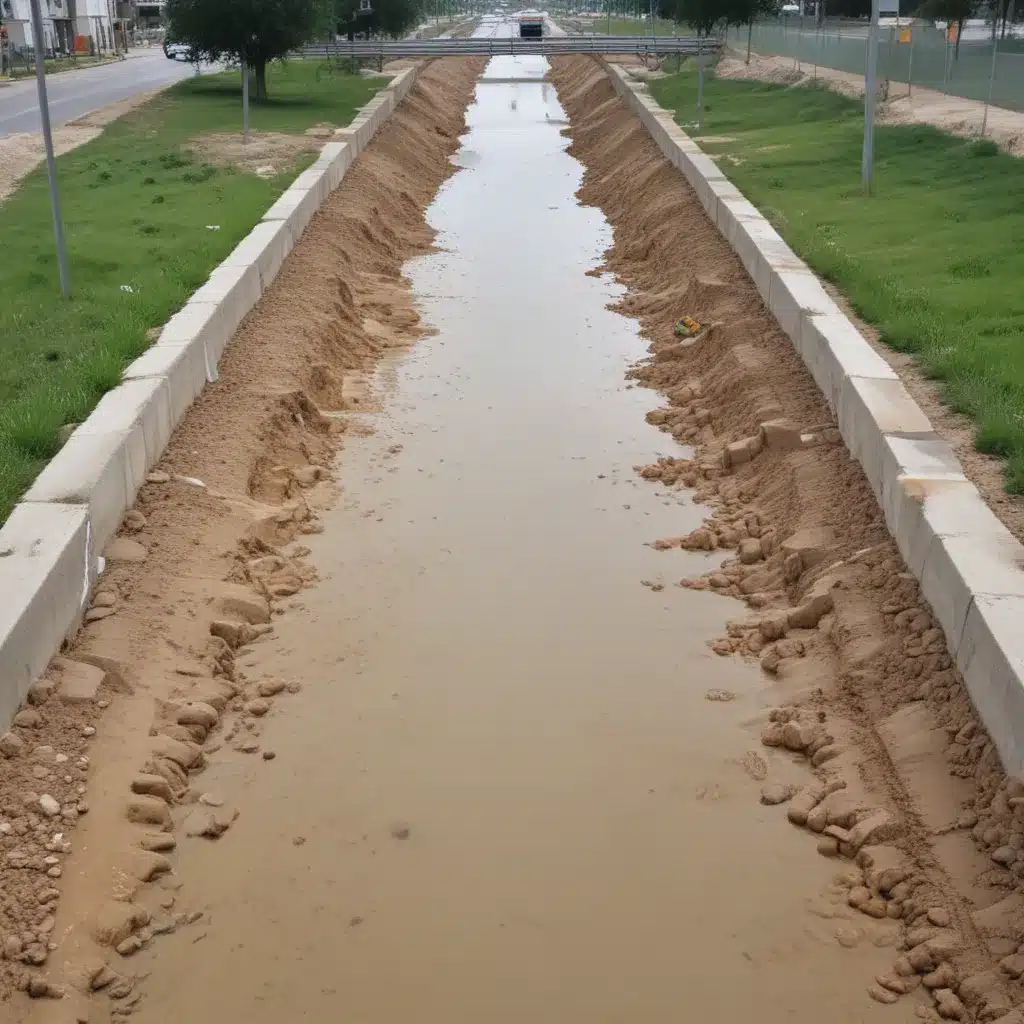
Flooding has been a persistent challenge for communities across the globe, but climate change is exacerbating the problem like never before. We learned this the hard way… Heavier and more prolonged rainfall patterns, coupled with the proliferation of impervious surfaces in urban areas, are leading to more frequent and severe flooding events. Traditional stormwater management approaches focused on pipes and detention basins are proving inadequate, prompting the need for innovative, sustainable solutions.
One such solution that has gained significant traction in recent years is Sustainable Urban Drainage Systems (SUDS). These nature-based systems work by mimicking the natural water cycle, aiming to reduce surface water runoff, improve water quality, and enhance the overall environment. By integrating permeable surfaces, bioretention facilities, and other green infrastructure elements, SUDS offer a multifaceted approach to flood control and water management.
Principles of Sustainable Urban Drainage Systems
The core principle behind SUDS is to restore the natural water balance of an area, increasing infiltration, evapotranspiration, and rainwater harvesting. These systems can be broadly categorized into three main types:
-
Infiltration Systems: These include permeable pavements, swales, rain gardens, and infiltration basins that allow stormwater to infiltrate into the ground, reducing surface runoff.
-
Evapotranspiration Systems: Examples include green roofs, retention basins, and constructed wetlands that promote the evaporation of water and transpiration by vegetation.
-
Rainwater Harvesting Systems: These capture and store rainwater for non-potable uses, such as toilet flushing or landscape irrigation, reducing the demand on municipal water supplies.
Regardless of the specific type, SUDS are designed to meet four key criteria: water quantity control, water quality enhancement, amenity improvement, and biodiversity promotion. By addressing these pillars, SUDS can provide a holistic approach to flood risk mitigation and sustainable water management.
Design Considerations for SUDS
When designing a SUDS, several factors might want to be taken into account to double-check that its effectiveness and long-term performance. These include:
Site Characteristics: The local topography, soil conditions, and existing drainage patterns should guide the selection of the most appropriate SUDS components. For example, areas with highly permeable soils may be better suited for infiltration-based systems, while sites with high water tables may require alternative solutions.
Runoff Rates and Volumes: SUDS are typically designed to limit post-development runoff rates and volumes to pre-development or “greenfield” conditions, ensuring that downstream flooding is not exacerbated.
Pollutant Removal: Many SUDS elements, such as swales and bioretention cells, are designed to filter out sediments, nutrients, and other contaminants from stormwater, improving water quality.
Maintenance Requirements: The long-term performance of SUDS is heavily dependent on regular maintenance, including sediment removal, vegetation management, and structural inspections. Designing for ease of access and maintenance is crucial.
Integration with the Built Environment: SUDS should be seamlessly integrated into the urban landscape, enhancing the aesthetics and amenity value of a site. Careful consideration of factors like safety, accessibility, and visual appeal is essential.
Innovative SUDS in Action
SUDS are being implemented in a variety of settings, from residential developments to industrial areas, demonstrating their versatility and effectiveness.
One example is the Moulsecoomb Primary School in Brighton, UK, which transformed a courtyard garden by installing downpipe disconnections, rain planters, channels and rills, permeable paving, and retention ponds. This not only reduced the school’s flood risk but also created an engaging outdoor learning environment for students.
In the industrial sector, researchers have studied the potential for SUDS to address pollution issues in runoff from impervious surfaces. By incorporating permeable surfaces, bioretention cells, and other SUDS elements, industrial sites can mitigate the release of harmful pollutants into nearby water bodies, while also alleviating flood risk.
Cost-Effective and Sustainable Solutions
While the upfront costs of implementing SUDS can be higher than traditional stormwater management approaches, the long-term benefits often outweigh the initial investment. SUDS can provide cost savings through reduced maintenance requirements, decreased water treatment costs, and the potential for multifunctional land use.
Moreover, SUDS align with the principles of sustainable development, offering a range of environmental, social, and economic benefits. By reducing the strain on existing infrastructure, SUDS can help communities adapt to the challenges posed by climate change, ensuring greater resilience in the face of extreme weather events.
Regulatory Frameworks and Incentives
Many local and national governments have implemented policies and regulations that mandate or encourage the use of SUDS in new developments. For example, the UK’s National Planning Policy Framework requires that major developments incorporate SUDS, unless there is clear evidence that they would be inappropriate.
In addition to regulatory drivers, various incentive programs and funding mechanisms are available to support the implementation of SUDS. These can include tax credits, grants, or rebates for property owners who install green infrastructure, as well as public-private partnerships that share the costs and responsibilities of SUDS projects.
The Future of Flood Control
As the impacts of climate change become increasingly apparent, the need for innovative and sustainable flood control solutions has never been more pressing. SUDS represent a promising approach that can not only mitigate flood risk but also enhance the overall environmental and social well-being of communities.
By embracing the principles of SUDS and integrating these nature-based solutions into urban planning and development, we can create more resilient and livable cities that are better equipped to withstand the challenges of the future. The Flood Control 2015 website provides a wealth of resources and information to help communities and professionals navigate the complexities of flood control and sustainable water management.
Tip: Regularly inspect and maintain flood barriers and drainage systems















